Peter Dornauf – 29 November, 2013
It began with a bid for a deconsecrated and defunct church in Te Aroha which Shepherd recently discovered he'd succeeded in winning. It meant relocating from Wellington and giving up a full-time job at Massey. This presented him with an opportunity to indulge in a dream and take part in an “experiment” in being self-employed, in being an artist/gallery owner and retail outlet serving the community.
Te Aroha
Folk art
New Zealand Folk Art and Design Gallery
Ongoing displays
How much significant raw art goes under the radar in this country? Stuart Shepherd, folk art enthusiast, collector, artist, and now gallery owner would claim a lot. In fact most of it. And according to Shepherd a good portion gets shipped overseas and sold to serious collectors. It bothers Shepherd.
What also bothers him is the number of ordinary people in New Zealand who feel alienated from the more esoteric end of art exhibition programs here. “There seems to be,” he notes with an element of chagrin, “a whole sector of the population who are excluded from the experience of contemporary art.” He describes it as an elite sport where “only a handful of people understand the rules” and where the game is conducted purely for a privileged class of art consumers.
Shepherd wants to correct that and has set about championing the cause of folk art, art at the margins, the creation of “outsiders”- the naïve and the untutored without formal training who create from perspectives deemed to be illegitimate and not eligible to mix with the professional fine art practitioners selected by government run institutions, museums and art galleries. He has gone about this project in several different ways, motivated by a strong and passionate sense with regard to the discriminatory practice and basic unfairness of such an inequitable exclusion.
While teaching at Massey University, he obtained funding to set up a website (Self-Taught and Visionary Art in New Zealand) which involved a nationwide survey that produced a collection of over 3000 slides of work from previously unknown artists. He has promoted the work of some of these artists by featuring them at the New York yearly Outsider Art Fair since 2009 and plans next year to do the same only in a slightly different format.
But perhaps most dramatically he has made some significant changes in his own professional life that has involved a major shift in geographic location and work commitments. It began with a bid for a deconsecrated and defunct church in Te Aroha which Shepherd recently discovered he’d succeeded in winning. It meant relocating from Wellington and giving up a full-time job at Massey. This presented him with an opportunity to indulge in a dream and take part in an “experiment” in being self-employed, in being an artist/gallery owner and retail outlet serving the community. Explaining his raison d’etre he says, “I wondered if it was possible for an artist to act like a tradesman without needing to satisfy a raft of admin, exec and marketing departments. Not being closeted in the ivory tower finalizing a PhD by polishing an opinion about some French theorist.”
This new bold venture - gallery/studio space, open at the weekends and by appointment (07 560 1046), is showing a range of works by a number of folk artists, self-taught practitioners and visionaries, including Reece Tong, Robert Rapson and Ray Ritchie.
Tong is a Wellington based artist who has exhibited and sold in Sydney, Melbourne, Paris and New York and does what Jean Dubuffet once produced without the deliberate and conscious contrivance. Tong achieves similar images with a simple intuitive response to his subject, reducing forms to their basic essentials, creating images that have a primal aesthetic associated with tribal art in paint on canvas or sculptural forms using wire and papier-mâché. His Bird and American People are definitive examples of his style.
Robert Rapson works in clay, the same medium and possessed of some of the technical qualities of Francis Upritchard work though without the knowing intellectual perspective. His ceramic painted ships are lumpy roughhewn shapes - small mantelpiece vessels that have a distinctive expressive quality partly because they combine both a ‘clumsy’ uneven finish while at the same time provide an accurate delineation of the subject. It sets up an interesting frisson between the two opposing aesthetic qualities.
Ray Ritchie’s wooden assembled sculptural figures are reminiscent of Karl Appel’s work seen in his CoBrA wood relief creations of the late forties. They are playful, comic and constructed in an almost Dada-like fashion from pieces of found wood and painted to present primitive forms albeit with a modern naïve look.
Shepherd has a plethora of works on show in the gallery that he has collected over the years which include old dentistry diagrams, beautifully crafted illustrations of anatomical features of the mouth - visual teaching aids that were used from yesteryear before digital projectors and the like.
Puppetry is another element that Shepherd has a fascination for and some of his own pieces are included in the show, slightly abstracted figures, painted white, based loosely on people he was familiar with from his former Wellington community.
All in all this is a unique venture, perhaps the only example of its kind in New Zealand and Shepherd is to be applauded for championing the cause of an overlooked aspect of art practice in this country.
It has to be remembered that the history of modernism could not have been constructed without the influence and stimulation from art traditions outside the accepted Western canon. Gauguin, Picasso, Matisse, the German Expressionists were all inspired and affected by such creations as were Kandinsky and Munter who collected and used Bavarian folk art in their paintings. Shepherd is returning the favour by giving them their due, bringing them out of the shadows and providing a means not only to celebrate these kinds of works but also to provide them with a much needed legitimacy as meaningful works of art in their own right.
Peter Dornauf
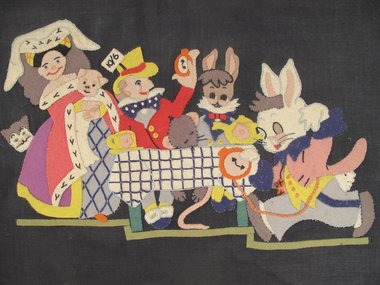

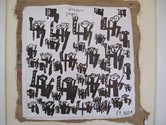
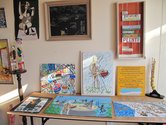


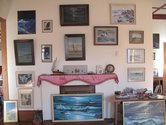
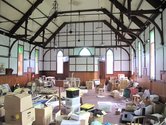
 Two Rooms presents a program of residencies and projects
Two Rooms presents a program of residencies and projects Advertising in this column
Advertising in this column



This Discussion has 0 comments.
Comment
Participate
Register to Participate.
Sign in
Sign in to an existing account.